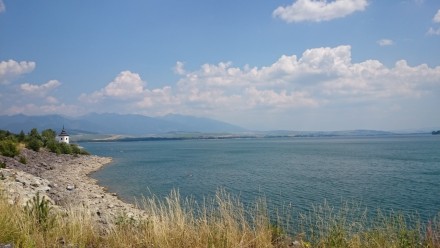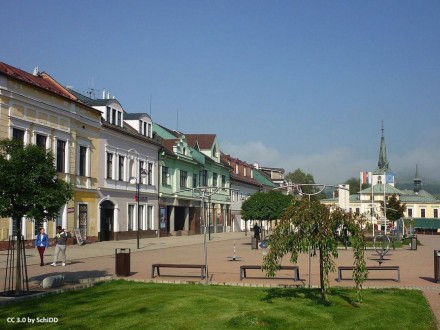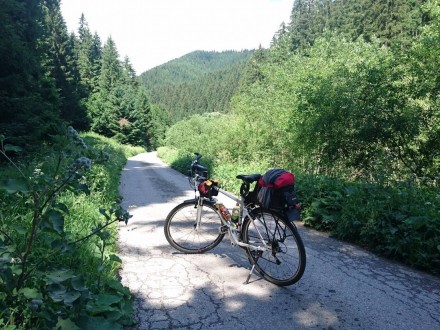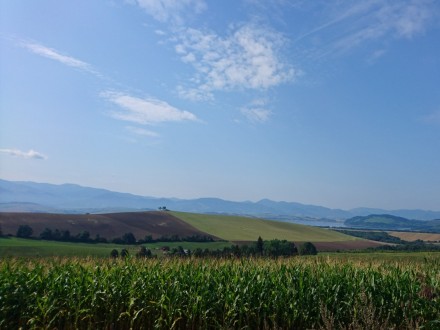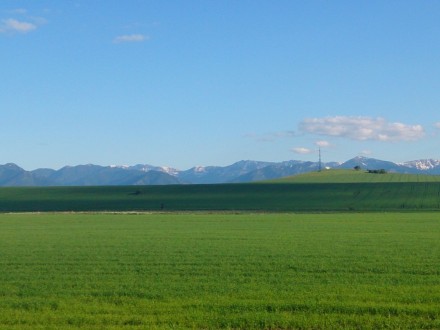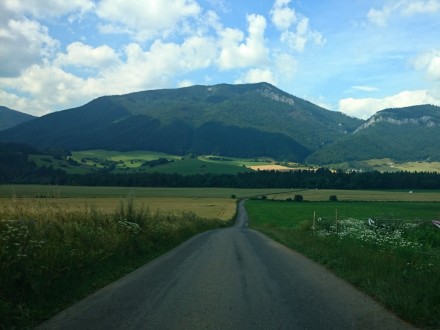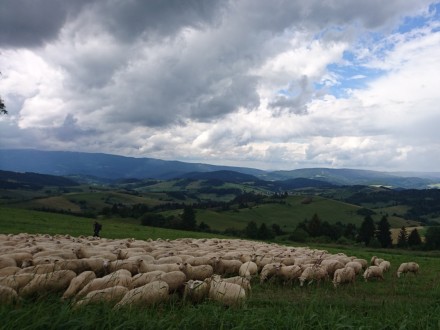LiptГіw and Orawa 2/2
Location:
SЕ‚owacja
Category:
hard
Distance:
75 km
Start:
Liptowski Mikulasz
End:
Orawskie Podzamcze
Gpx:
Rodzaj nawierzchni:
asfaltowe Е›cieЕјki rowerowe
drogi publiczne
Rodzaj roweru:
SPD - trasy odpowiednie dla kaЕјdego rodzaju roweru, tzn. szosowego, crossowego i gГіrskiego/MTB
TRK - trasy odpowiednie dla roweru crossowego i gГіrskiego/MTB
Welcome to the sunny side of Tatras! Poprad, VГЎh, and Orava are the three rivers, which play an important role in three neighbouring lands: SpiЕЎ, Liptov, and Orava. The second part of this two-day trip is great for the landscape hunters - the area of LiptovskГЎ Mara, later, still undiscovered corners of the VeДѕkГЅ ChoДЌ ridge and Orava valley; you cannot miss the picturesque monuments as well, such as the remains of the church on the lakeside or the majestic Orava Castle.
Total length: 75.1 kmTotal ascent: 790 mRiding time (without breaks): 4 h 48 minRequired experience: ModerateNecessary physical fitness: highStart and end: LiptovskГЅ MikulГЎЕЎ, OravskГЅ PodzГЎmokAccess: train (LiptovskГЅ MikulГЎЕЎ, OravskГЅ PodzГЎmok), car
Profile, road surface, types of roads: click here
Notes:the trail is a part of a two-day trip, or a one-day excursion if you take a train back to the starting pointHelmets required in Slovakia not suitable for kids riding on the bikesmost of the route on the roads with motor traffic you can check the train timetable at www.slovakrail.sk
Main attractions of the route:
LiptovskГЅ MikulГЎЕЎ: LiptovskГЅ Saint Nicholas. A very important city in Slovakian history, tempting us with a beautiful lake and geothermal springs.Views from BeЕ€uЕЎovce: far from busy roads, amazing views over the LiptovskГЎ Kotlina, with the lake at the feet and Low Tatras on the horizon.LiptovskГЎ Mara: the Slovakian cousin of Lago di Garda and the church ruins just above the sheet of water - the only souvenir from the inundated villages that disappeared underwater.SestrДЌskГЎ Dolina: a deep valley, almost a gorge, crossing the VeДѕkГЅ ChoДЌ range. Peace, greenery, and us - a very pleasant experience. Wooden church in LeЕЎtiny: wooden architecture beauty spot, 17th-century evangelical church with beautiful rich polychrome paintings. UNESCO listed.DolnГЅ KubГn: a small town with great historical importance in Slovakia. One of the crucial places of the period of the awakening of national awareness (19th century).Pucov and PribiЕЎ area: sometimes it’s good to wander off the beaten track and see the typical Orava villages.Orava Castle: one of the symbols of Slovakia, a castle of centuries-old history, built boldly high on the rocks over the Orava river valley.
Description:
From MikulГЎЕЎ, we go west, on the main road which soon leads us over the shores of LiptovskГЎ Mara. We get off the road in Trnovec, where leaving the village, we get on the steep and high slopes of Pod HГЎjom. The panoramic views allow you to cherish the Low Tatras and the lake at the foothills, as well as the VeДѕkГЅ ChoДЌ ridge in all its glory. On a long downhill ride, we get back to the lake and go further, for around 4.5 km, to BobrovnГk, where we turn to the local road and reach the lake shores of LiptovskГЎ Mara.
A place of remarkable charm. The tower is a relic of a formerly major church in Liptovská Maria. As in the case of other villages here, the name stems from the patron’s name of the local church. Maria, together with a dozen other villages, disappeared under the waters of the artificial lake, nowadays the biggest (however, not the most extensive) lake in Slovakia.
From Mara, we continue our trip back north, so as to, leaving Bukovina, get to the SestrДЌskГЎ Dolina. The road, initially of quite poor quality, gets much more comfortable; riding on a narrow forest path is a sheer pleasure. SestrДЌskГЎ Dolina, as well as the parallel ones: LГєДЌanskГЎ, ProsieckГЎ or KvaДЌianskГЎ, cut through the VeДѕkГЅ ChoДЌ ridge all the way from the north to the south, creating somewhat rocky islands, divided by the incredible rocky gorges.
The last part, a very steep one, gets us between the streets of Malatiná. It’s an attractive area, still not widely known, but incredibly picturesque one. Around Malatiná, you will see some flocks of sheep or cowherds, as the area is still mainly traditionally rural. Orava welcomes us with such landscapes.
Our effort of the last roads uphill (almost 300 m of height difference) is rewarded by a long, over 13 km downhill road, all the way to DolnГЅ KubГn. It is worth stopping by in LeЕЎtiny, to visit an old wooden 17th-century protestant church (UNESCO listed) or just to see the renovated mansion in VyЕЎnГЅ KubГn.
We reach DolnГЅ KubГn, a city equally important to LiptovskГЅ MikulГЎЕЎ when it comes to Slovakian independence, related to the poet Pavol OrszГЎgh Hviezdoslav. Through a small, but attractive old town, we get to the banks of Orava, which we cross through a wooden bridge.
The next 8 km is a ride along the river, on a right or left bank, all the way to Medzibrod, from where we swerve once again to the idyllic areas, this time of the villages Pucov and PribiЕЎ.
The last descent today, through an interesting and narrow valley, gets us back to Orava, just at the foothills of Orava Castle. It is one of the symbols of Slovakia, a great tourist attraction; from here, the whole Orava area was formerly managed. A tall silhouette of the castle rises 112 metres above the bottom of the valley. We recommend spending additional 2-3 hours visiting the Castle Museum and the newly opened Peatland Museum.
The trail ends at the railway station, from where we can go back to MikulГЎЕЎ, Poprad, or TrstenГЎ (going the other direction).
Project’s Partners



















Portal Co-Financed By The European Union From The European Regional Development Fund Under
The Interreg V-A Pl-Sk Cross-Border Cooperation Program 2014-2020
Portal modernization co-financed by the Ministry of Development

